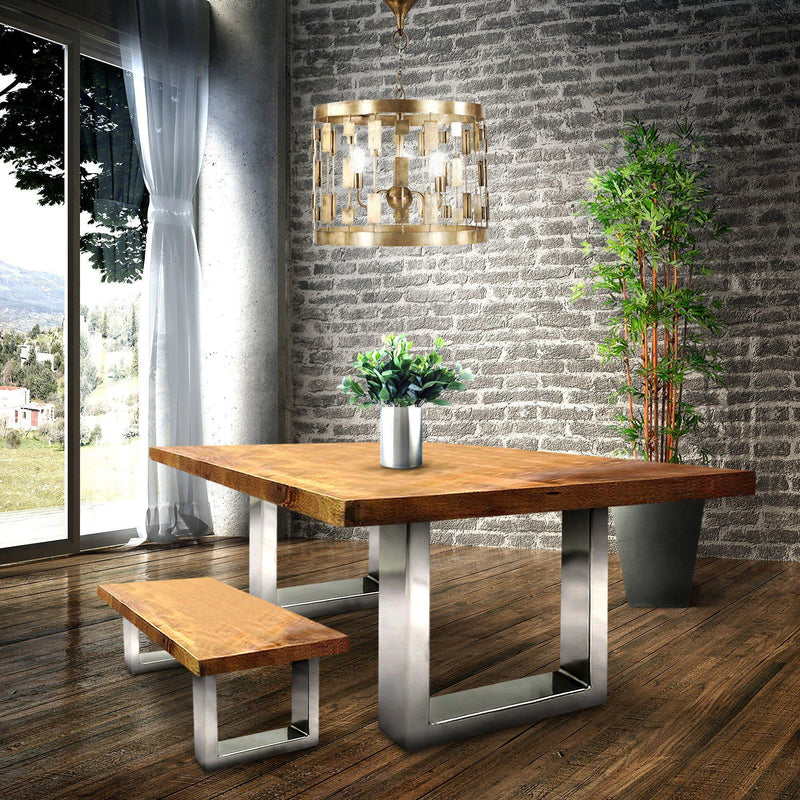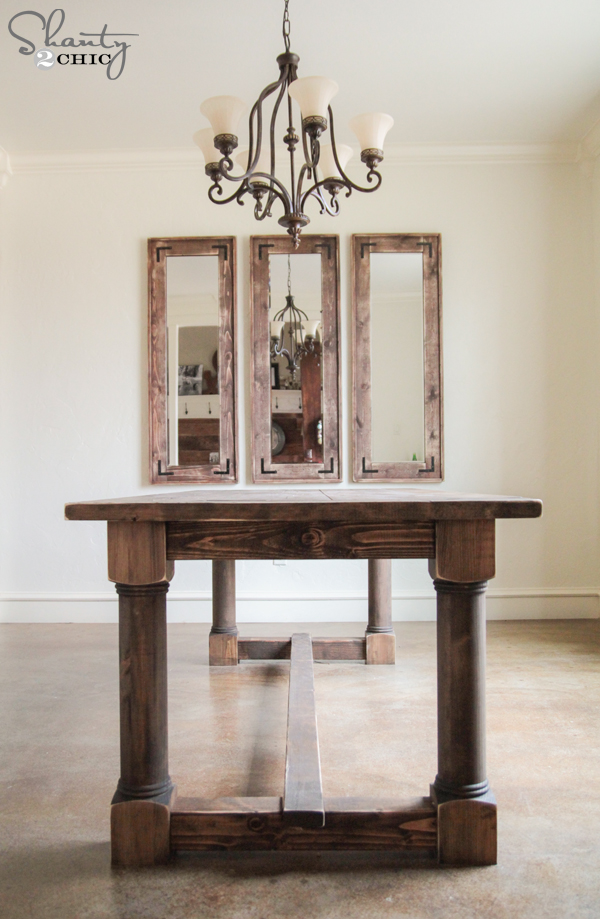The Impact of Dining Room Table Legs on Your Table's Overall Design
The Impact of Dining Room Table Legs on Your Table's Overall Design
Blog Article
From Typical to Modern: Locate the Ideal Eating Space Table Legs for Your Design
While timeless designs such as cabriole and turned legs evoke a feeling of classic sophistication, contemporary designs like barrette and geometric alternatives present an opportunity for striking aesthetic passion. As you consider these elements, the concern stays: just how can you seamlessly integrate these diverse leg styles to produce a harmonious eating experience?
Recognizing Table Leg Styles
The selection of dining-room table leg designs can significantly influence both the visual appeals and performance of the space. Each leg style contributes unique functional functions and visual aspects, accommodating diverse design choices and use requirements. Understanding these designs is essential for choosing the best dining table that straightens with your total interior decoration vision.
For instance, conical legs provide a clean, timeless appearance that can enhance a room's style, while pedestal bases provide security and optimize legroom, making them perfect for smaller sized spaces. Hairpin legs, a characteristic of mid-century contemporary design, present an industrial panache, permitting an airy, open feeling. Trestle legs evoke rustic beauty, providing durable support and a sense of timelessness.
In addition, the choice of products plays a significant function. Wooden legs can bring warmth and texture, whereas metal alternatives frequently share a streamlined, modern ambiance. Eventually, recognizing table leg styles is crucial for developing a cohesive dining location that reflects individual style while making sure usefulness and comfort. By thoughtfully taking into consideration these components, you can enhance both the functional and visual appeal of your dining room.
Conventional Table Leg Options
When choosing dining-room table legs, standard alternatives commonly symbolize classic elegance and craftsmanship. These styles show an abundant heritage and a dedication to top quality, making them perfect for those who appreciate traditional appearances.
Among one of the most famous standard leg designs is the cabriole leg, identified by its elegant bent form. This style usually includes attractive makings and is most generally located in Queen Anne and Chippendale furnishings. An additional preferred choice is the transformed leg, which flaunts a series of smooth, rounded shapes that provide a classic look while maintaining security.
In addition, the straight leg, while straightforward, supplies a durable and unadorned framework that can mix seamlessly with a variety of tabletop styles. For those attracted to ornate describing, claw-and-ball feet legs stimulate a sense of splendour and can work as a sensational focal factor in any eating room.
Finally, pedestal bases, although not purely legs, offer an alternative traditional alternative that enables enough legroom and can be beautifully sculpted. Each of these conventional leg styles adds to the general ambiance of an eating space, weding feature with aesthetic appeal.

Modern Table Leg Layouts
Modern table leg styles offer a varied variety of designs that emphasize innovative materials and tidy lines. These styles commonly focus on performance while functioning as striking prime focus within a dining area. Minimal aesthetics prevail, with legs crafted from materials such as steel, glass, and engineered wood, which contribute to a ventilated and contemporary feeling.
One preferred style is the hairpin leg, characterized by its slender, conical framework that offers security without frustrating the tabletop (dining room table legs). This style is commonly found in mid-century contemporary furnishings and can easily match numerous eating table forms. Another pattern is the usage of geometric forms, where legs might handle asymmetrical or angular forms, adding aesthetic rate of interest and a touch of creativity

Mixing Styles for One-of-a-kind Rooms
Usually, property owners seek to develop special eating areas that show their individual style by mixing various style aspects. This approach permits the unification of diverse aesthetic appeals, leading to a harmonious yet distinct atmosphere. Coupling a rustic wooden table with sleek, modern-day metal legs can develop an appealing contrast that boosts the room's total appeal.
Additionally, incorporating vintage table legs with contemporary tabletops can evoke a sense of history while preserving a modern-day perceptiveness. Such mixes not only display specific taste but also motivate creative thinking, enabling house owners to curate a room that really feels both individual and welcoming.
Shade plays a vital duty in this mixing procedure; picking table legs that enhance or contrast with the existing color design can improve visual rate of interest. Whitewashed legs can soften the boldness of a over at this website dark table surface, creating a well balanced visual.
Tips for Selecting the Right Legs
Choosing the right table legs is important for attaining both capability and aesthetic allure in your why not find out more eating room. Begin by considering the general style of your area. Conventional setups take advantage of legs that include intricate carvings or transformed styles, while contemporary rooms might ask for smooth, minimalist styles.
Following, analyze the elevation and security of the legs. dining room table legs. Basic table vary in between 28 to 30 inches in elevation, so make certain the legs complement this measurement for comfort. In addition, robust materials, such as hardwood or metal, can enhance stability and longevity
Review the leg shape as well-- options include right, tapered, or stand designs. Straight legs supply a classic appearance, while conical legs can include a touch of sophistication. Pedestal bases supply try this enough legroom and are suitable for smaller sized rooms.
Final Thought
In summary, choosing the ideal dining space table legs requires mindful consideration of both modern-day and conventional designs. By balancing leg design, elevation, and product with the overall decoration, a cohesive and welcoming environment can be attained.
The selection of dining space table leg designs can significantly affect both the appearances and performance of the room. Ultimately, recognizing table leg styles is essential for producing a natural dining area that reflects personal design while ensuring practicality and comfort.One of the most iconic standard leg designs is the cabriole leg, defined by its elegant curved shape. Straight legs supply a traditional appearance, while conical legs can add a touch of sophistication.In recap, choosing the suitable eating space table legs needs careful consideration of both modern-day and traditional styles.
Report this page